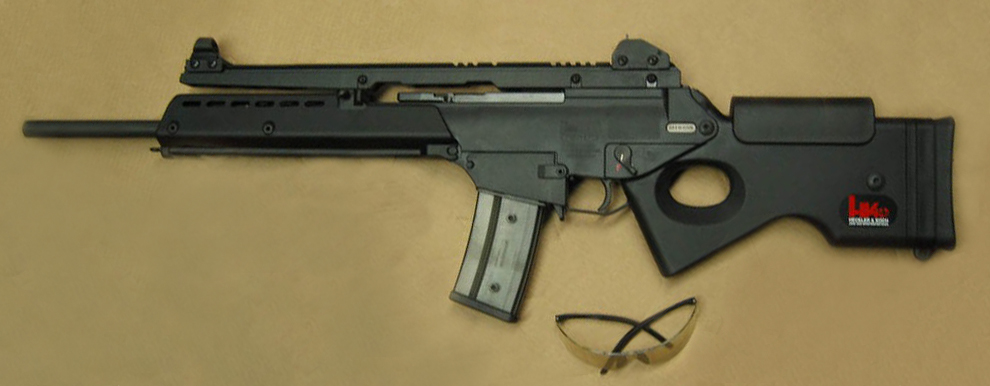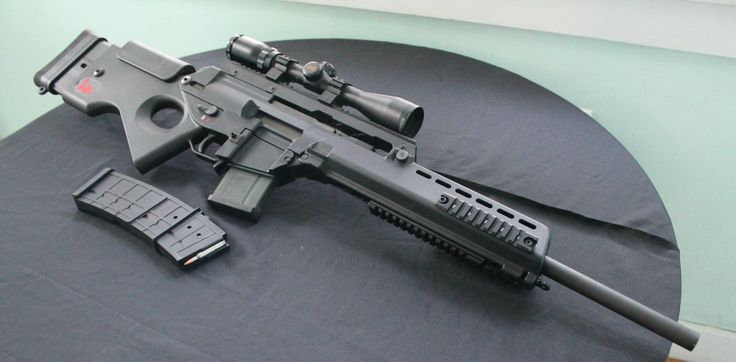sl8fk (intel pentium extreme edition 840)-WWW.NBCPU.COM
sl8fk (intel pentium extreme edition 840)-WWW.NBCPU.COM
sl8fk (intel pentium extreme edition 840) Detail Information
We specialized in CPU trade, contact us if you need bulk sale or purchase this kind of CPU,please do not hesitate to contact us :
Email :[email protected],Tel: +86 0755-82928539
| General information | |
| Type | CPU / Microprocessor |
| Family | Intel Pentium Extreme Edition |
| Processor number | 840 |
| Part number | HH80551PG0882MM BX80551PG3200F |
| Frequency (GHz) | 3.2 |
| Bus speed (MHz) | 800 |
| Clock multiplier | 16 |
| Package type | 775-land FC-LGA6 |
| Socket type | Socket 775 (LGA775) |
| Architecture / Microarchitecture / Other | |
| CPUID | 0F44h |
| Core stepping | A0 |
| Processor core | Smithfield |
| Manufacturing technology (micron) | 0. |
| Number of cores | 2 |
| L2 cache size (MB) | 2 |
| Features | EM64T technology Execute disable bit Hyper-Threading technology |
| Core voltage (V) | 1.25 — 1.388 |
| Case temperature (°C) | 69.8 |
| Notes on sSpec SL8FK | |
|
|
Other S-Spec number
qwps (intel pentium t2330)
qwpo (intel pentium t2370)
qwpg (intel pentium t2410)
qvix (intel pentium t2060)
qvin (intel pentium t2080)
qlkk (intel pentium su2700)
qkvy (intel pentium su4100)
qhzf (intel pentium dual-core mobile t4300)
qhzc (intel pentium dual-core mobile t4200)
qhel (intel pentium t3200)
qgfm (intel pentium t3400)
qdc5 (intel pentium 2030m)
qch7 (intel pentium 2020m)
qbnt (intel pentium t3200)
qbkh (intel pentium b970)
qacl (intel pentium b960)
qacb (intel pentium b950)
qaca (intel pentium b940)
q4le (intel pentium p6000)
q4e2 (intel pentium u5400)
q4ct (intel pentium p6300)
q4b3 (intel pentium u5600)
q1cn (intel pentium t2130)
sr1lc (intel pentium 3560m)
sr1j3 (intel pentium b925c)
sr1hd (intel pentium 3550m)
sr1e8 (intel pentium 3558u)
sr1e3 (intel pentium 3556u)
sr1dg (intel pentium 3561y)
sr1de (intel pentium 3560y)
Tel:+86 0755-83247530 Email:raymond@nbcpu. com
com
NBCPU All rights reserved..
Intel Pentium Extreme Edition 840 Dual Core 3.20GHz 800MHz FSB 2MB L2 Cache Socket 775 Processor
(No reviews yet)
Write a Review
Intel
Part No: SL8FK — Intel Pentium Extreme Edition 840 Dual Core 3.20GHz 800MHz FSB 2MB L2 Cache Socket 775 Processor
Rating
Required
Select Rating1 star (worst)2 stars3 stars (average)4 stars5 stars (best)
Name
Email
Required
Review Subject
Required
Comments
Required
- Brand:
-
Intel
- Part Number #
- SL8FK
- Availability:
- In Stock
$210. 00
00
$175.00
— You save $35.00
Get bulk pricing
-
Description -
Read Before Ordering
Description
SL8FK — Intel Pentium Extreme Edition 840 Dual Core 3.20GHz 800MHz FSB 2MB L2 Cache Socket 775 Processor
View AllClose
- Related Products
- Customers Also Viewed
Related Products
Customers Also Viewed
Marking and overclocking potential of processors
Those users who have just started overclocking have probably paid attention to the overclocking statistics of one or another computer component, given in the press or on forums. Interest in this topic is understandable: own experiments do not always give the same result as described on specialized sites. In order not to rely on luck when choosing a CPU, you should study the factors that affect overclocking potential.
Interest in this topic is understandable: own experiments do not always give the same result as described on specialized sites. In order not to rely on luck when choosing a CPU, you should study the factors that affect overclocking potential.
First, let’s figure out why overclocking becomes possible at all. The fact is that none of the modern manufacturers have separate lines for the production of processors with a given clock frequency. CPUs are simply produced according to a certain technology (say, 0.09 micron), and the most interesting begins already at the moment they “leave the assembly line”. Take, for example, AMD Athlon 64: the Fab30 factory in Dresden manufactures processors based on the Venice core. During the “assembly” process, testing is carried out, and not the entire batch, but only part of it. The check is first carried out at the maximum frequency for a given core (for example, 2.4 GHz), and if the selected sample passes all tests, then all processors from this series are marked and put on sale with the appropriate rating (in this case, Athlon 64 3800+) . If a failure occurs during testing, then the processor clock frequency is reduced and the next testing cycle begins, and so on until the test batch passes all the procedures, after which the devices are assigned the appropriate rating.
If a failure occurs during testing, then the processor clock frequency is reduced and the next testing cycle begins, and so on until the test batch passes all the procedures, after which the devices are assigned the appropriate rating.
The fact that only a fraction of the processors are being tested allows us to assume that the model marked as 3000+ (1800 MHz) will be able to operate at 2400 MHz (corresponding to 3800+), or even higher. It also happens that at the moment the market is oversaturated with expensive processors, but there is a shortage of weak and cheap ones, then the manufacturer makes a knight’s move and sells the older model under the guise of a younger one, lowering its clock frequency (and earlier available cache memory was still limited).
But how do we determine when buying a processor, what it is actually capable of? An absolutely accurate answer can only be obtained through testing, but there are entire portals on the Internet that provide statistics on overclocking processors with their markings. Very useful information can be indicated here — up to the place and week of production of a given instance of the processor. How to read such marking? To do this, you need to know how it is decrypted.
Very useful information can be indicated here — up to the place and week of production of a given instance of the processor. How to read such marking? To do this, you need to know how it is decrypted.
Course
MANAGEMENT TEAM
Choose your team and lead it to sleep.
REGISTER!
So, the main thing that interests us in marking AMD processors is the name of the core and the release date of this instance. And we need such information for the following reason: over time, since the start of production of a processor on a given core, the technology is being debugged, that is, there is less “rejection”, which means there is less chance of getting a copy with impressive overclocking. An example of this is the modern Athlon 64 based on the Winchester core, which at first pleased enthusiasts with a very good potential, but after the 50th week of 2004 it barely reaches 2400 MHz.
Thus, knowing the overclocking statistics of AMD processors will help you make the right choice. Athlon 64 existed and exists on various cores — all of them are given in the description of the marking, and therefore we will not repeat ourselves. Of all the options listed, only Winchester, Venice, San Diego for Athlon 64 processors, Paris and Palermo for Sempron are currently available for sale.
Athlon 64 existed and exists on various cores — all of them are given in the description of the marking, and therefore we will not repeat ourselves. Of all the options listed, only Winchester, Venice, San Diego for Athlon 64 processors, Paris and Palermo for Sempron are currently available for sale.
Zmist
- 1 Winchester
- 2 Venice
- 3 San Diego
- ADA — processor type:
- ADA — Athlon 64 Desktop
- SDA — Sempron Desktop
- 3000 — processor rating:
- A — Socket 754
- D — Socket 939
- C-Socket 940
- E — processor core voltage:
- E — 1.
 5 V
5 V - I — 1.4 V
- A — 1.3 V
- E — 1.
- P — maximum processor core temperature:
- I — 63 °C
- P — 65 °C
- O — 69 °C
- K — 70 °C
- A — 71°C
- 4 — second level cache size:
- 4 — 512KB
- 5 – 1024KB
- 6 — 2048KB
- AX — processor core type:
- AX, AW — Newcastle
- AP, AR, AS, AT — Clawhammer
- AK — Sledge Hammer
- BI — Winchester
- BN — San Diego
- BP, BW — Venice
- BV — Manchester
- CD — Toledo
- BI — Manchester (for Sempron)
- BA, BO, AW, BX, BP, BW — Palermo (for Sempron)
- AX — Paris (for Sempron)
9and week 50, 2004. The specimens produced in these weeks almost always reached 2500 MHz with confidence, and some even 2700–2750 MHz. However, it is impossible to find a well-overclocked processor released after week 50, 2004. Either because AMD began to select samples for marking more carefully, or for another reason, but now it is almost impossible to overcome the 2500 MHz threshold. Although overclocking is still a lottery, anything can happen here, for example, the 3rd week of 2005 often pleased overclockers with frequencies of 2600-2650 MHz. The worst are the 11th week of 2005 — overclocking to the level of 2200-2250 MHz — and the 1st week of 2005 — 2250-2300 MHz.
Venice
The new processor core, which replaced the public favorite Winchester, has already become a byword: a superbly overclockable processor, a new 0.09 micron process technology (as opposed to 0.13 for Winchester). Venice repeats the feat of his great-grandfather Barton (Athlon XP Socket A). The new technical process (correspondingly, the reduced core area) made it possible to raise the frequency potential bar even higher — to the level of 2700-2800 MHz, a rare processor on this core does not conquer the 2700 MHz mark. The most successful are 16, 20, 22, 28 and 29weeks of 2005 Almost all processors produced at that time are overclocked to 2750 MHz, and on average even to 2800 MHz. It is worth paying special attention to the 22nd and 28th weeks, it was then that copies were produced that operate at a frequency of 2900-2950 MHz!
The most unfortunate weeks of 2005 were 17, 18 and 19. Overclocking rarely reaches 2600 MHz, which, to put it mildly, is not enough for this core. The limit for week 17 is 2550–2600 MHz, for week 18 it is 2500–2550, while none of the 19 processorsWeeks could not take the bar at 2500 MHz.
The limit for week 17 is 2550–2600 MHz, for week 18 it is 2500–2550, while none of the 19 processorsWeeks could not take the bar at 2500 MHz.
San Diego
Another new kernel that produces a somewhat contradictory impression: it’s basically the same Venice, but with the L2 cache increased to 1 MB. The San Diego core is used for Athlon FX-57 processors, which is the reason for the weak overclocking potential of Athlon 64 with this core: processors are very meticulously selected for Athlon FX, so it’s unlikely to find a successful example among the Athlon 64 San Diego.
The best production time is week 15, 2005: overclocking to 2850-2900 MHz, the worst — week 22, 2005 — overclocking to only 2500-2600 MHz.
Sempron
Sempron processors are designed for the budget segment of the market, they have a reduced size of the second level cache — only 256 KB, no support for AMD64 technology, only SSE3 is present in older models. Although processors with a rating of 3300+ for Socket 9 are already appearing39, which have 64-bit support, most likely, this is a rejection of the Athlon 64 on the Venice core with the L2 cache half disabled.
Although processors with a rating of 3300+ for Socket 9 are already appearing39, which have 64-bit support, most likely, this is a rejection of the Athlon 64 on the Venice core with the L2 cache half disabled.
Paris
The processors on this core do not please us with anything special: overclocking to the level of 2200-2500 MHz. The most successful production time is the 4th week of 2005, overclocking is about 2450–2500 MHz. The most unfortunate — the 37th week of 2004, 2200-2250 MHz.
Palermo
Switching to the 0.09 micron process technology didn’t give Sempron processors on the Palermo core much advantage — the same stable overclocking to the level of 2250-2500 MHz. The most successful copies were released on the 1st week of 2005 — overclocking to 2450-2550 MHz, the most unsuccessful ones — on the 5th and 27th weeks of 2005 — overclocking of about 2100-2150 MHz.
Athlon 64FX
Processors of this class are very rare in overclocking statistics, yet they are among the most expensive devices — the price for the FX-53, FX-55 models starts at $999, and not everyone can afford a processor of this class. Athlon 64 FX takes the bar at 2800 MHz without any problems, demonstrating enviable performance.
Athlon 64 FX takes the bar at 2800 MHz without any problems, demonstrating enviable performance.
Athlon 64 X2
New generation dual-core processors are produced on Manchester and Toledo cores, the difference is in the size of the second level cache — 2×512 KB and 2×1024 KB, respectively. So far, not very popular products due to their high cost, their production technology has not really been worked out, there are not so many programs that get at least some performance boost from dual-core, and there are no games at all. In overclocking, they show modest numbers of about 2200-2400 MHz, but there are no representative statistics yet due to the «dampness» and lack of demand for these processors.
This is the end of a small «population census» among modern processors manufactured by AMD — the most popular among enthusiasts due to their low cost, good performance and excellent overclocking potential. But it’s too early to put an end to it, new data is coming in, new records are being set. The beginning of 2006 is just around the corner, when processors based on the 0.065-micron process technology will appear and new overclocking opportunities will open up.
But it’s too early to put an end to it, new data is coming in, new records are being set. The beginning of 2006 is just around the corner, when processors based on the 0.065-micron process technology will appear and new overclocking opportunities will open up.
In general, it is worth recalling that statistics are a very capricious thing, and even more so overclocking statistics. It is not a fact that by purchasing the processor of the best week according to the statistics, you can achieve the results that are given in this article. Acceleration depends on many factors, but still the main things in this difficult matter are good cooling and some luck.
AMD processor marking
ADA3000AEP4AX (first line)
LBBE 0529CPCW (second line)
These letters mean (for the first line):
For the second line, only four digits in the center are significant, which are responsible for the week of production of the processor: 0529 — 29th week of 2005.
Intel 9 processor marking0047
For processors from Intel, everything is a little more complicated — they only show the main characteristics, such as: clock frequency, processor number, system bus frequency, model marking like SL8FK.
